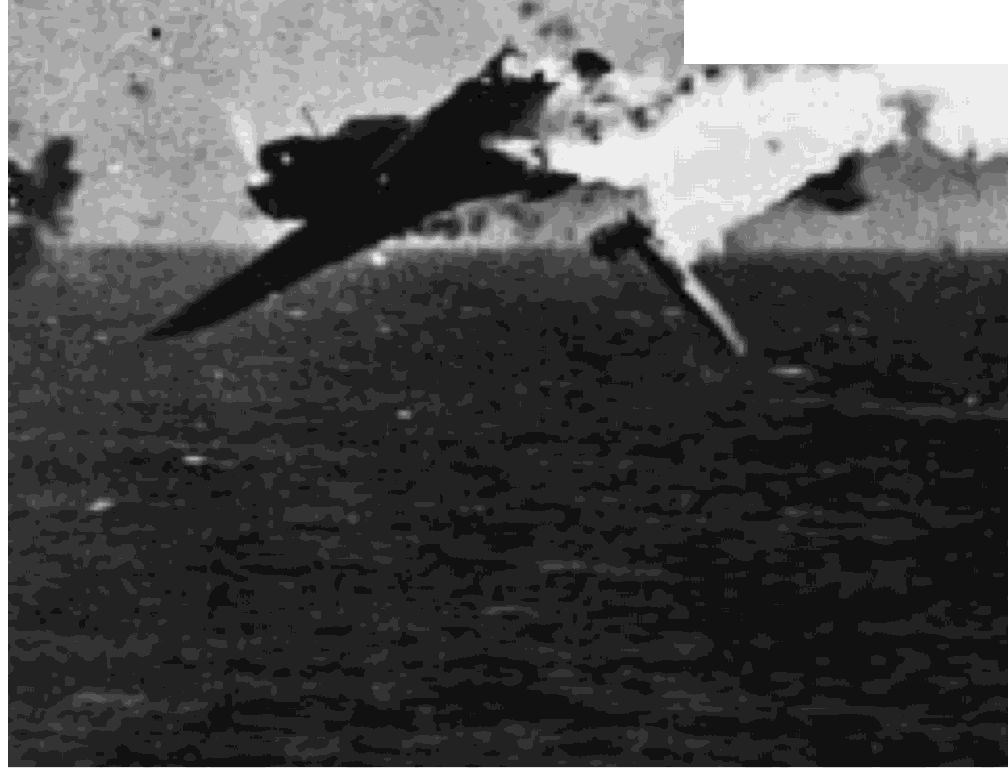
112
UNITED STATES NAVAL AVIATION
1910-1995
1942-Contin ued
functioned satisfactorily by proximity to water at the
end of a 5-mile trajectory. This performance,
obtained with samples selected to simulate a produc-
tion lot, confirmed that the radio-proximity fuze
would greatly increase the effectiveness of anti-air-
craft batteries and led to immediate small scale pro-
duction of the fuze.
30 January
The Secretary of the Navy authorized a
glider program for the Marine Corps consisting of
small and large types in sufficient numbers for the
training and transportation of two battalions of 900
men each.
1 February
The Secretary of the Navy announced
that all prospective Naval Aviators would begin their
training with a three months' course emphasizing
physical conditioning and conducted by Pre-Flight
Schools to be established at universities in different
parts of the country. The training began at the
Universities of North Carolina and Iowa in May, the
University of Georgia and St. Mary's College, Calif., in
June, and at Del Monte, Calif., in January 1943.
1 February
First U.S. Carrier Offensive-Task Forces
8 (Vice Admiral William F. Halsey) and 17 (Rear
Admiral Frank J. Fletcher), built around the carriers
Enterprise
and
Yorktown,
bombed and bombarded
enemy installations on the islands of Wotje, Kwajalein,
..
. .
Attacking Japanese tOlpedo plane
is
shot down by antiaircraft fire
from Camel:, raiding Mw:,hall Islands 201986
Jaluit, Makin, and Mili in the Marshall and Gilbert
Islands.
12 February
The Chief of Naval Operations promul-
gated an advanced base program using the code
names "Lion" and "Cub" to designate major and minor
bases, and in July added "Oaks" and "Acorns" for avia-
tion bases. This was the beginning of a concept of
functional components which developed as the war
progressed and which provided planners and com-
manders with a means of ordering standardized units
of personnel, equipment, and material to meet any
special need in any area, in much the same manner as
ordering from a mail-order catalogue.
16 February
A Navy developed Air-Track blind land-
ing system was in daily use in Iceland for landing fly-
ing boats. Other blind-landing systems were in various
phases of development, and work on the Ground
Controlled Approach system had progressed to the
point that Navy personnel had made talk-down land-
ings at the East Boston (Commonwealth) Airport, Mass.
17 February
Commander-in-Chief, U.S. Fleet autho-
rized removal of athwartships hangar deck catapults
from
Wasp, Yorktown, Enterprise
and
Hornet.
21 February
The seaplane tender
Curtiss
and
Patrol Squadron 14 arrived at Noumea, New
Caledonia, to begin operations from what became a
principal Navy base in the South Pacific during the
first year of the war.
23 February
The Bureau of Aeronautics outlined a
comprehensive program which became the basis for
the wartime expansion of pilot training. In place of the
existing 7-months course, the new program required
eleven and one half months for pilots of single or
twin-engine aircraft and twelve and one half months
for four-engine pilots; and was divided into three
months at Induction Centers, three months in Primary,
three and one half months in Intermediate and two or
three months in Operational Training, depending on
type aircraft used.
24 February
First Wake Island Raid-A striking
force, (Vice Admiral William F. Halsey) composed of
the carrier
Enterprise
with cruiser and destroyer
screen, attacked Wake Island.
26 February
The Navy's Coordinator of Research
and Development requested the National Defense
Research Committee to develop an expendable radio
sonobuoy for use by lighter-than-air craft in antisub-
marine warfare.
 |
12 |
 |